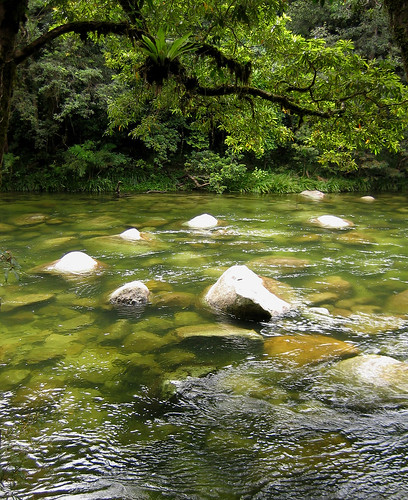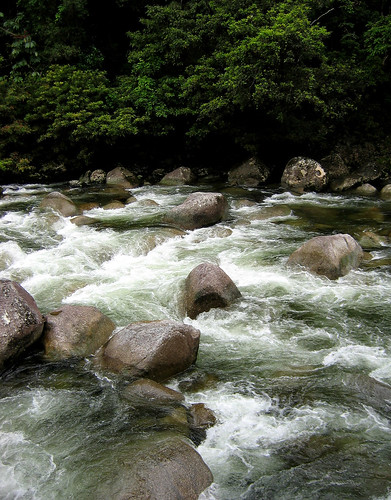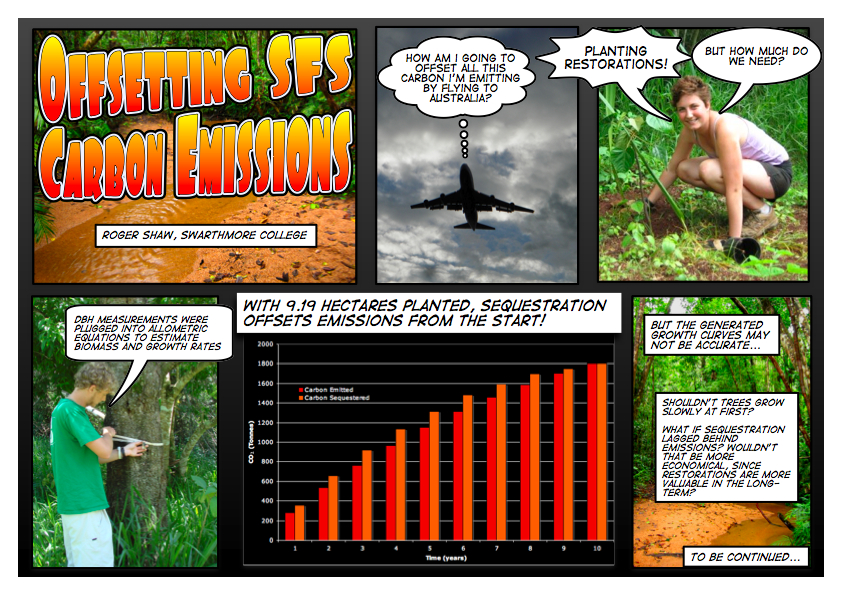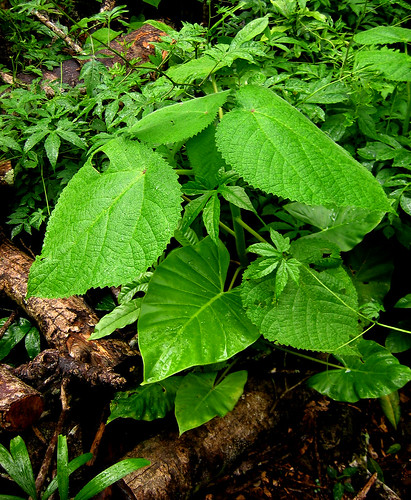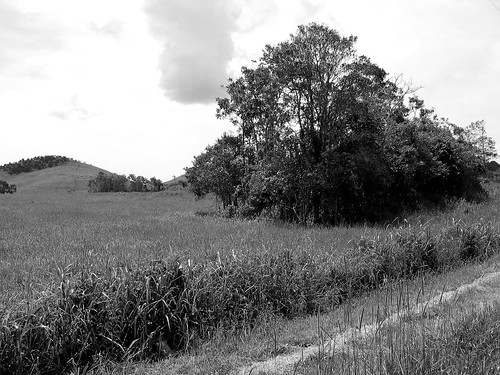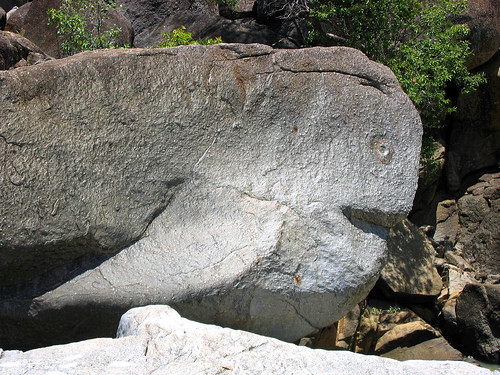AustraliaLargely because of its long geographic isolation, Australia has a lot of unique, endemic species, and some of the particularly charismatic ones have become symbols of Australia. Kangaroos, Koalas, Cassowaries, the world knows about all of them, and you'll find them in all the major zoos (except the Cassowary, which is very difficult to keep in captivity). Some of those charismatic species I've already seen, but many I haven't.
Kangaroos – The Red Kangaroo is the really large one that everyone's seen in zoos. I haven't seen that one, it largely lives in the desert interior, so maybe I'll see them at Alice Springs after the program. But I have seen its smaller cousin, the Grey Kangaroo. I've also seen a lot of the other large marsupials, including Agile Wallabies and Mareeba Rock Wallabies, which live in the drier regions. The only one I regularly see in the rainforest is the Red-legged Pademelon, which is cinnamon colored, with brighter rufous-red legs. The cool thing is, they look exactly like kangaroos shrunk down in the dryer, they're the size of our cottontail rabbits back home, proportioned like kangaroos! During the day it's really hard to get a good look at them though, they're extremely skittish, and will hop away long before you know they're there. But during the night they're very active and they're everywhere, you just need to bring a spotlight out into the dark. The other cool ‘kangaroo’ I’ve seen is the Lumholtz’s Tree-Kangaroo, probably the most well-known denizen of the Atherton Tablelands where I’m studying.
Cassowary – pwned
Koala – I have no chance of seeing this in the wild, I'm not going to the right parts of the country. So the only experience I'll have with these is that scarring experience in Kuranda.
Wombats, Echidnas, other assorted marsupials – probably not likely, but honestly I haven't done the research to find out.
Emu – on our two trips into the appropriate sorts of habitat, no luck. This may be difficult until I get to Alice Springs, and even then it's not a lock. I'm crossing my fingers.
Platypus – On the evening of the first of March, we went to a local farmer's property to learn about rainforest restoration. As a bonus afterwards, we stopped by an overlook on the Barron River to look for platypus. They're really tough to spot. Two individuals popped their heads above the water for a breath, and were gone a second later. So all I saw was the bill. The things are a lot smaller than you probably think too. But at least I can say that I've seen platypus in the wild now.
HungaryInstead of heading to the pub to celebrate my 21st birthday last night, I watched the film
Werckmeister Harmoniak (
Werckmeister Harmonies). On paper, it's about a small Hungarian town, torn apart by a mysterious circus that features a giant dead whale. That makes it sound almost like a comedy, but that's the furthest you could get from the truth.
Werckmeister Harmoniak is slow, tragic, moving. It's also one of those pretentious art films that looks really beautiful, but whose main point sails over your head. I don't have a clue what Bela Tarr, or the original novel's writer, was trying to say. My guesses on the theme range from the Soviet occupation, the false optimism of capitalism, revolution in general, or the dark side of human nature. I really don't know. I doubt I ever will, even if I watch the film ten more times.
Despite that intellectual confusion,
Werckmeister Harmoniak is possibly the most beautiful film I have ever watched, in terms of cinematography. In the Mood for Love doesn't even hold a candle to
Werckmeister Harmoniak, something I didn't believe was even possible. Shot in black-and-white, every image slowly soaks into the consciousness, and stays there. I could turn off the subtitles, mute the sound, and Werckmeister Harmoniak would still be a powerful film. If you want to see a really beautiful movie, watch this.
Deep UndergroundI'm finally on the verge of finishing John McPhee's
Annals of the Former World, a tome which has taken me nearly a month to get through. It's a collection of five books about American geology, and American geologists. But this is not a geology textbook; I doubt I've learned all that much about rocks that I didn't already know. This is a collection of thoughts, stories, anecdotes, ideas about geology, and the people who study geology. Over the past few months, John McPhee has grown to possibly become my favorite author, fiction or non, and as his supposed masterwork, I had to get to
Annals at some point.
Book One, entitled
Basin and Range, deals with the series of mountains and valleys found in Utah and Nevada known as the eponymous Basin and Range, and follows Princeton geologist Kenneth Deffeyes through the rock. It started off fairly slow; I honestly wasn't all that interested in the Basin and Range geology itself. What really got to me was the history of geology, as presented by McPhee, as the book began to wind down. Those portions of the book were among the best writings I've ever seen out of him. Unlike the typical McPhee book, which I always feel start off brilliantly but then run out of steam,
Basin and Range built to a magnificent conclusion, and is one of the most striking works in McPhee's catalog. Highly recommended.
Book Two, entitled
In Suspect Terrain, follows geologist Anita Harris, and concerns itself with the Appalachian Mountains of Pennsylvania and New Jersey, and how they came to be. I'll be honest: this book was boring, slow, and way too long. And that's all I really have to say. It was by far the worst McPhee book that I've ever read, and the only one I really haven't enjoyed in any sort of capacity. Terribly disappointing.
Book Three, entitled
Rising from the Plains, works itself around Wyoming with David S. Love, preeminent Rocky Mountain geologist. I was surprised at how linear the narrative was at times. I generally know McPhee as someone who jumps all over the map, delicately threading a narrative through that you don't even begin to notice until the end, and that's the brilliance of his work. In here, a lot of the book follows Love's biography chronologically, and I'm surprised at how competent of a storyteller McPhee can be. I love his writing for the small details he notes, the absurd humor he discovers in them, and the subtle ways they are tied to the big picture, so it was interesting for me to watch him try his hand at working only with the big picture. I think he largely succeeded. His painting of the landscape around Jackson Hole was especially evocative. This is not representative of McPhee's usual style, but it's still a very good read that I'd certainly recommend.
Book Four, entitled
Assembling California, follows Eldridge Moores around California, Macedonia, and Cyprus, in a quest to understand how California's rocks could become so radically different from the rest of the country's. Like
Basin and Range, this one started off quite slow, as a whole lot of rocks and rocky structures were described. That's the whole point of Annals I guess, to describe rocks, but those were probably my least favorite parts. The conclusion to
Assembling California, however, was spectacular, as McPhee described tales from the Loma Prieta earthquake of 1989. I have never seen McPhee write so dramatically, and he pulled it off really well.
So now I'm starting on the final book, entitled
Crossing the Craton. It's very short, and from what I hear its only purpose is to settle things down after the fireworks of Assembling California. So effectively, I am finally finished with
Annals of the Former World. Hurrah. McPhee won the Pulitzer Prize in 1993 for his work on this book. In my mind, he undoubtedly deserves a Pulitzer, but maybe not for this book. In general, he spends too much time talking about rocks, when his strength is with people.
Surprisingly, I've found one other McPhee reader here, who's read many of the same books of his that I have. She strongly recommended
Encounters with the Archdruid as her favorite, so that will likely be next on my list of McPhee. In the meantime, once I finish
Crossing the Craton, I'm moving on to
The Big Twitch, the autobiography of a fanatical Australian birder. That shouldn't take long, so warming up in the bullpen I've got Don DeLillo's
Underworld, which should be a good one.
From Tallahassee to the Dark HillsidesFor the first few months of its existence, this site served only as a log of my bird sightings in and around Swarthmore, remnants of which still survive in the address and the archives. This past summer, I made a decision to experiment with opening up the blog, to incorporate more of my thoughts, ideas, and occurrences. My only fear was that this would turn into an emo diary, a scenario which I wanted to avoid at all costs.
I'm not bringing this up because I'm about to go into emo mode; I might indirectly, but that's not why I brought the history in. I wanted to mention that history because the very first non-bird-related post I ever made on this thing was a first-impression review of the Mountain Goats album
Get Lonely.
At the time, I simply wrote that it sounded very different from a typical Goats album, but that I might get used to that new sound, and grow on the album. That never happened. Darnielle mentioned to a Pitchfork staffer that the only people who could fully understand the album were people who had gone through ugly divorces, or rough breakups from other very serious relationships, as those are the lyrical and musical themes which the album addresses. Thankfully I've never found myself in any of those kinds of situations, and subsequently the album never did anything for me. I think Pat summed it up well in his WSRN review:
Get Lonely is an album that can be appreciated, but it's difficult to enjoy, and actually, you're probably not even supposed to enjoy it. I thought that was spot-on.
But now that I'm trying to get through my own breakup (though thankfully it was an amazingly clean one) this album is getting to me hard. I know people who listen only to happy and melodic music because they always want to feel joyful, and people who listen only to chill music because they always want to feel relaxed. I've never been the type to do that, I try and find music which matches the mood I'm in, to complement it and make it that much more powerful. So it means a lot to me when I say that
Get Lonely is hitting me harder than any other album has at one point in time. Every song on the album, up to and including 'Woke Up New', is wrenching my heart apart on every listen, that's all I can say. To me, right now, at this moment in life,
Get Lonely is a perfect statement of how I'm feeling and how my days are going.
I did mention, however, that it's only true up to 'Woke Up New'. None of the remaining three songs do anything for me. I have a few theories on why that's the case. First, 'Woke Up New' is unquestionably the emotional climax of the album, and the rest is the come-down that inherently comes off less dramatically. Second, 'If You See Light' is unquestionably the worst song on the album, and kills off any potential emotional impact that the remaining songs could have. Or last, Darnielle has sequenced the album chronologically/autobiographically, and the last few songs don't make sense only because I haven't reached that part of the recovery process.
In reality, it's probably a combination of all three factors. I will note that the final song, 'In Corolla', sounds like it has to be the conclusion to the recovery, when Darnielle has finally gotten over his breakup, and life is back to normal. Connected to that point, it's also the song most similar to the traditional Mountain Goats oeuvre and style. But right now, I can't relate to it at all. Maybe in a few months, I'll listen to it a few times, move on, and close the book on
Get Lonely. But for an album intended for those poor souls coming from dark places, 'In Corolla' seems like an awfully out-of-place closer that's sickening when placed next to 'Moon Over Goldsboro' or 'Maybe Sprout Wings'; it's not even optimistic enough to serve as some sort of goal or light at the end of the tunnel, it just feels wrong. 'Cobra Tattoo' may have been a better closer for the record. Small quibbles aside,
Get Lonely is hitting me hard right now, and it's changed my perception of what Darnielle is capable of as a songwriter.
Back to Australia
A lot of my photos are now uploaded, so I'm going to post them here in a series of short sets. Eventually I'll get caught up with the present day, and try and post photos continuously from there. The Atherton Internet Cafe was significantly faster this past Friday than it was before for some reason, hence the successful photo uploading. Let's hope that new speed sticks around.
Paterson Creek, which runs through the property.

Waterfall on Paterson Creek. There aren't any land trails to this spot, so the only way to get here is by wading upstream a fairly good distance. Even further upstream there's a few more waterfalls, but none of them are quite as photogenic.

Dan standing among the roots of the Cathedral Fig, whose canopy was posted earlier.
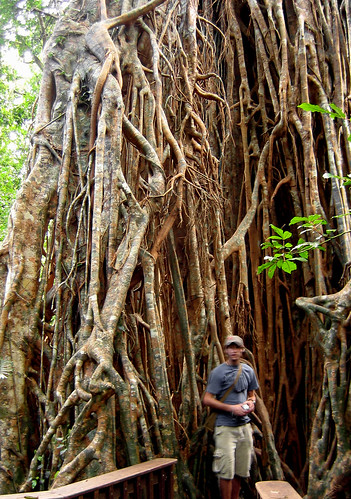
The Kangaroo Cafe in Malanda. Obviously that's not a real Lumholtz's Tree-Kangaroo up top, it's just a sculpture.
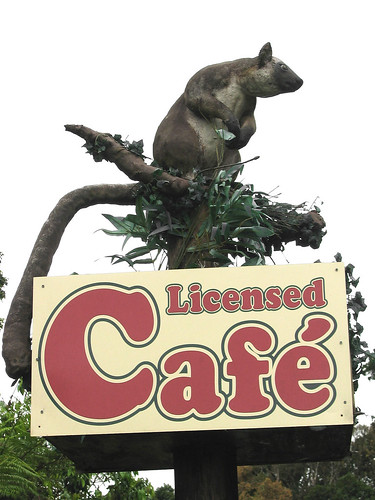
Leeches attached: ~85
Leeches that have feasted upon my blood: 4
Labels: australia, music, thoughts
